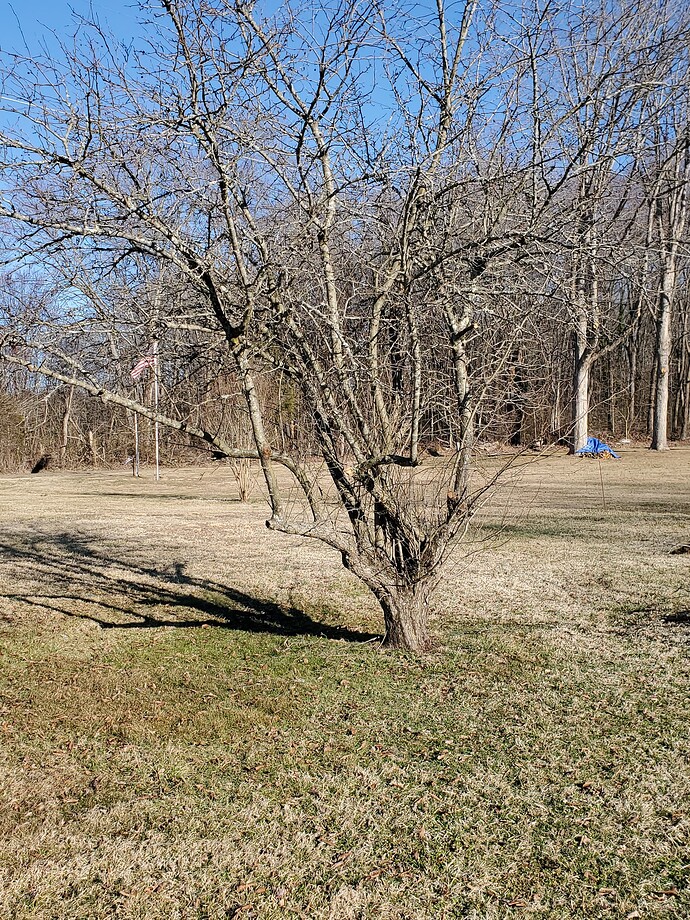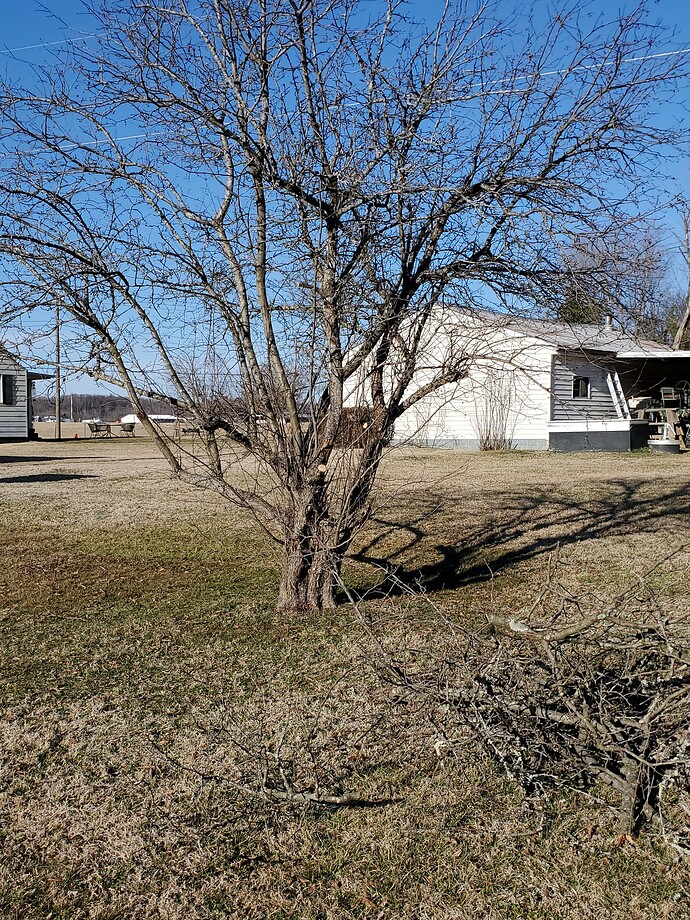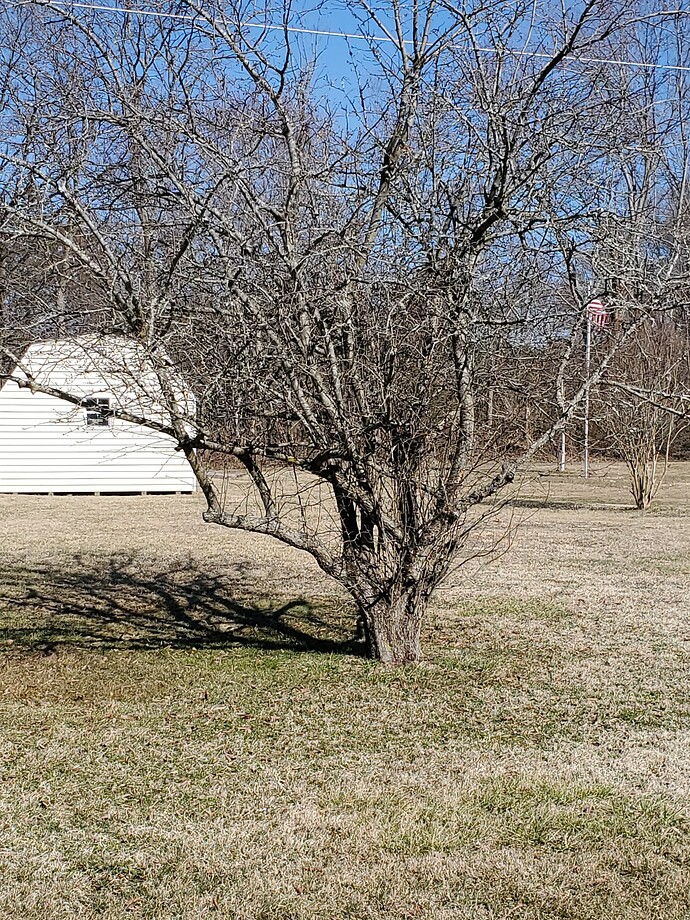Hello all,
I’m hoping to partake of the collective experience and wisdom here to help me with deciding how to approach pruning (and also grafting) to an existing crab apple tree at our new place.
The tree is roughly 30 years old and seems to have taken well to this poor draining clay, but other than some signs of large branches having been removed by tge past owner which (i’m assuming sprawled out low and wide enough to make mowing under it tricky), I’m doubtful the tree was ever trained/pruned.
I’ve cut out a couple of larger limbs that were obviously dead, and a couple of the worst crossing branches that were rubbing against other limbs (there are a few stubs in the pictures I have here but they will be cut back to a branch collar), but I’m finding the scraggly growth of this tree a little overwhelming for someone that’s never pruned an apple tree before to decide where to start from there.
I know i want to be judicious with how much I prune in a single year to avoid over stressing the tree, but looking at the shape, the tree is lopsided towards the N and E sides which i worry could be a threat to it if we have a strong windstorm from the wrong direction.
My eventual plan for the tree is to graft various other apples into it as a “frankentree” and i should have several scions coming this year to get started on that, but I’m also debating where the best spots to do such grafting would be to compliment the needed pruning strategy.
Thanks in advance. I appreciate any wisdom the pruning masters here have to give. Pictures to follow (these pictures were taken late afternoon so the sun is coming from the west and throwing the shadows eastward for orientation).








